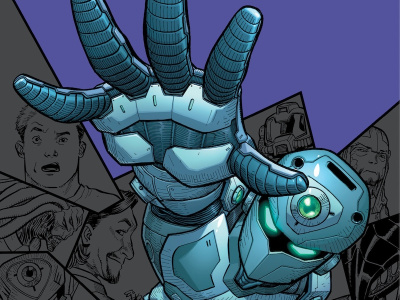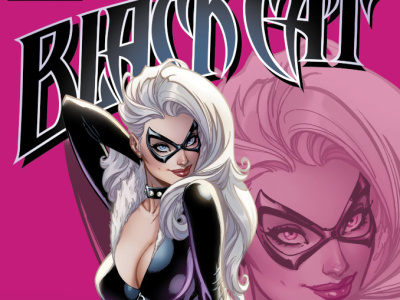
In the process of diversification you've expanded the definition of manga. As originally used it meant material licensed from Japan. You've expanded that to include the Korean sourced material, and now the domestically sourced material. What does manga mean to Tokyopop?
Manga is a visual story-telling technique which employs a fairly wide range of graphic design elements but which has at its core a freshness, a newness, a focus on character, on more complex stories. Manga has a willingness to slow up and speed down. It plays with pacing.
Depending on the genre... it always amuses me when people talk about what manga is. If you take any ten licensed books, whether it's Ragnarok or Fullmetal Alchemist, or Negima, or Chobits, or Love Hina, I would defy you to define manga based on any ten. It's such a broad category anyway.
We see manga as having a certain visual esthetic. It's got all kinds of elements: cyberpunk, it's futuristic, the actual lines that are used in terms of the inking techniques tend to be more feathery and less dense than you find in Western comics. Manga breathes a lot more than other kinds of comics in terms of being willing to really slow down, and take some time and be more leisurely; and then on the next page you can have a series of incredibly accelerated panels.
The analogy that I like to use in describing it to people who don't know a lot about where manga comes from and what makes authentic manga is to think of something like jazz. As a musical format, it had its birthplace in a very particular geographical location: the United States, even more particular than that the South, even more particular than that New Orleans. Even today there are people who are jazz purists who really believe that if it doesn't come from that particular culture and wellspring, it isn't really jazz. In the past hundred years jazz has incarnated itself all over the world, and everywhere it appears it's interpreted in a very specific and distinct way, whether it's Europe, or South America, or Asia.
Manga's very similar to that. It's undergoing a similar internationalization. We work with and have customers among kids all over the world. Thai manga looks different from American manga, which looks different from Japanese manga, which looks different from the manga that kids may produce in Europe. It's so new that definitions haven't been set in concrete yet. You can see the local flavor expressed in the work. Defining all of it as having something manga-like about it is sometimes a challenge. And that's why some of our original books will be easily identifiable as manga and will be directly embraced by the current manga readership. Other books that we publish, people are going to sit on the floor in the manga section and open them up and really be confused, 'What is this?' That's okay. That's part of the process of all of us trying to figure out what manga really means to the consumers of manga in the United States.
We're not experts. We have a lot of opinions. We work with a lot of people who have interesting takes on manga. We have a certain esthetic but we're also experimental. We know that means there are going to be some hits and there are going to be some misses.
You talked about story pacing. What about three other things: the look of the characters, which it seems you're stretching in the original stuff away from the Japanese source material, target audience, and format. Do you think any of those are intrinsic to your definition of manga?
Certainly the target audience and format are. I think it's very clear that the graphic novel format in the incarnation that we debuted in 2002 has become the accepted consumer format, at least for right now. The $9.99 graphic novel appears to be the way that people all over the world like to consume manga. I think that is a common element.
Audience, yeah. We talk a lot about when will there be an audience (because I firmly believe there will be) for both younger and older readers in the U.S? Right now the U.S. is pretty much a teenager's game, high school and college years being the peak of current American readership. That teen-age, early-twenties demographic is common now but you're going to begin to see some differences. In Japan it's from cradle to the grave. In some European countries there's a wider spectrum of readership as well. Eventually that will happen in the U.S.
I'm not sure how long it will take for there to be a significant josei or seinin audience in the U.S. but it's coming. A certain amount of kids who are reading manga now will stay with manga as they grow older. Right now, though, calling it a teens, early-twenties art form is probably fairly accurate, so I would agree that makes something manga.
In terms of character designs there are a whole bunch of approaches. There's the stereotypical whispy-lined big-eyed girls in shojo and magical girl stories. There's the incredibly hard-edged stuff you might see in a book like Blame or Tokyo Tribes. And then there's the more sophisticated Paradise Kiss, kind of Mars, treatment of character design. I don't know that I would agree that there's a universal approach to character design that can be called manga. I think it's a little too diverse for that.
The things you described as characteristics of manga, does Cine-manga fit that definition?







